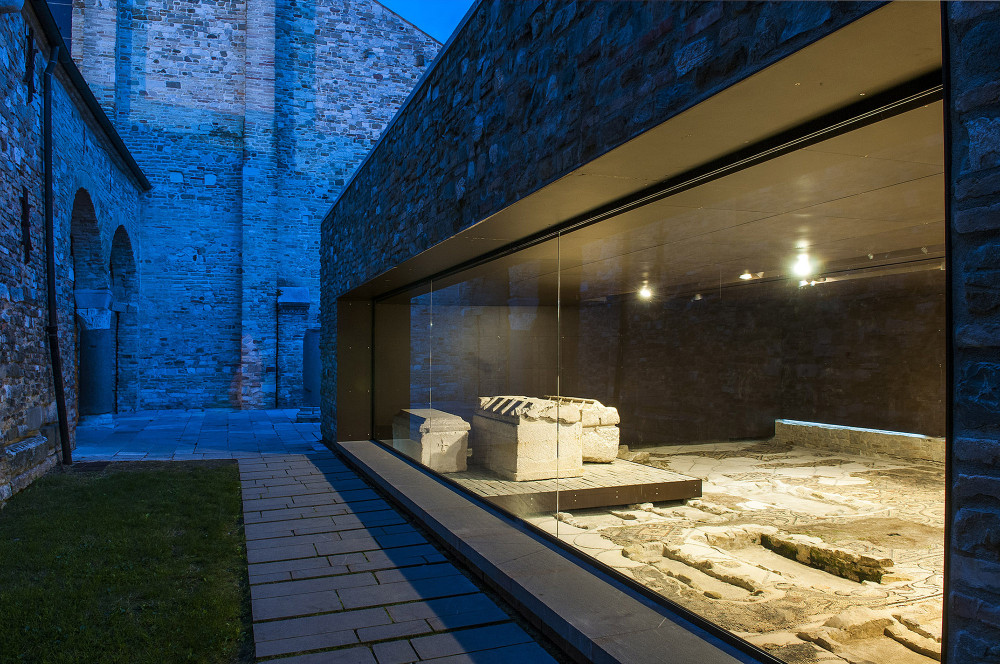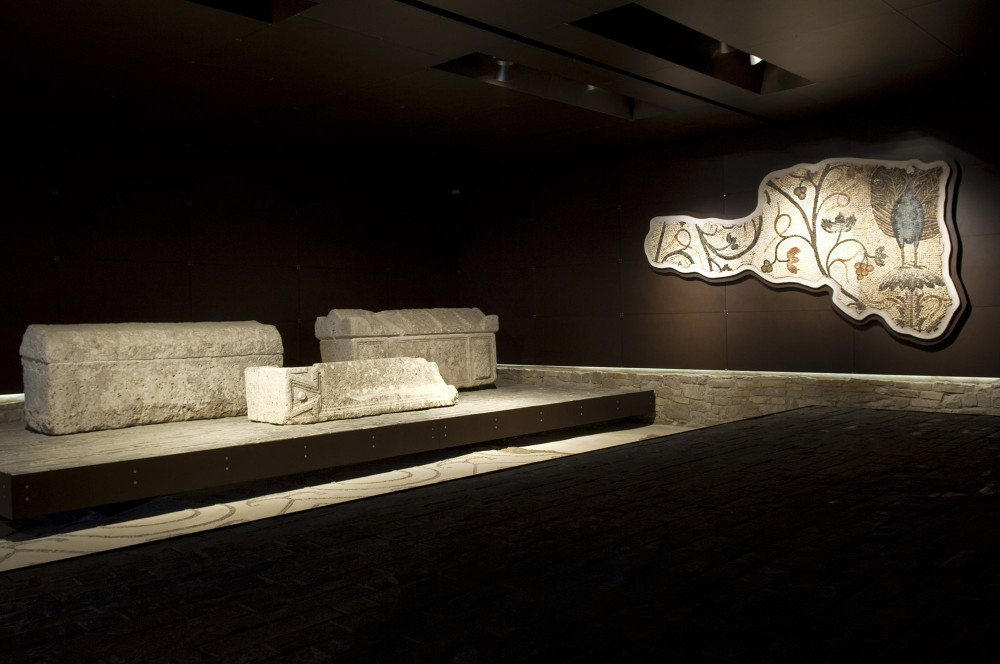To both sides of the Baptistery, two large symmetrical rectangular halls were discovered as early as in 1893 and identified by archaeologists as Nordhalle (northern hall) and Südhalle (southern hall), respectively. These halls made a complement to the big complex of the basilica.
Both halls were paved with mosaics: the northern hall mosaic was quite incomplete, while the southern hall mosaic can be dated between the late 4th and the early 5th centuries AD.

Mosaic floor
Although the mosaic floor in the Südhalle was discovered more than a century ago, it has been made visible since 2011 only, inside a museum specially built for the purpose. The vast carpet is composed of three separate sections. Two side strips feature a network of alternating round and spindle-shaped frames around diamonds with geometrical patterns. The central section is composed of octagons with animals (including a lamb) connected together with a complex system of rhombuses and parallelograms. After the Südhalle was destroyed, the area was used as a burial ground during the Middle Ages, as witnessed by several tombs found on top of the original mosaic floor.

Peacock mosaic
A beautiful mosaic fragment with a peacock, now displayed on a wall in the Südhalle museum, used to decorate the apse of a long passage (narthex) connecting the southern hall to the basilica. The peacock – a symbol of immortality and thus an allegory of the resurrection – is seen frontally, with its tail fanned. Glass paste tesserae (in blue, turquoise and other colours) are craftily arranged to confer a marvellous polychromy to the bird. Recent restorations proved that the tesserae in one tail eye were coated with thin gold foil to add further preciousness to the beautiful theme.


